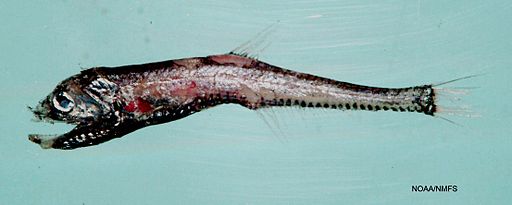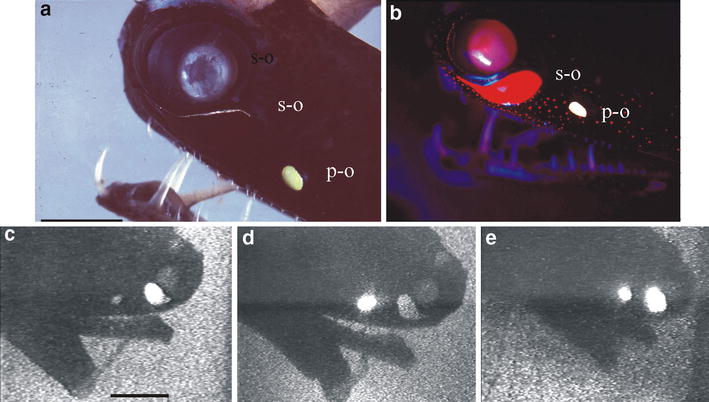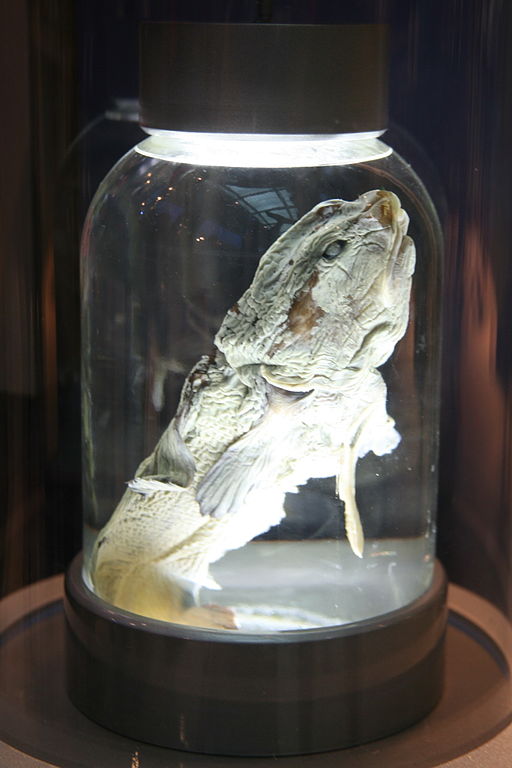Stenopterygii
So there's only one order in here, Stomiiformes. Why it gets its own superorder I have no idea. But Nelson says they used molecular studies, so you know it has to be good. These are deep sea fishes, complete with luminescent organs, sharp teeth, and dark spooky colors.
Diplophidae
So Nelson gives almost no information about this family, besides that it lacks an adipose fin. He spends most of the time talking about how it used to be a subfamily of Gonostomatidae but now it's not. And that's it. Fishbase and Wikipedia barely acknowledge it, so I've got nothing. Sorry.
Gonostomatoidei
This suborder has serial photophores, which I believe means they run along the side of the body. But I might be incorrect.

By SEFSC Pascagoula Laboratory; Collection of Brandi Noble, NOAA/NMFS/SEFSC. (NOAA Photo Library: fish4262) [CC BY 2.0 or Public domain], via Wikimedia Commons
Gonostomatidae: Bristlemouths
I guess when you have a mouth full of bristles, you become slightly indecisive. Nelson describes them as "adipose fin present or absent," which I'm pretty sure applies to anything. You could be described as "adipose fin present or absent." That chair you're sitting in could be described the same way. But what do I know? I didn't write a guide to fishes. Don't listen to me. Nelson does note that the genus Cyclothone is found in every ocean and is considered the most abundant vertebrate genus in the world.

By SEFSC Pascagoula Laboratory; Collection of Brandi Noble, NOAA/NMFS/SEFSC [Public domain or CC BY 2.0], via Wikimedia Commons
Sternoptychidae: Marine Hatchetfishes
This family contains the relatively recognizable marine hatchetfishes, with their deep/compressed bodies and bugged-out eyes. They have photophores on their body, which they use for signalling and camouflage.
Phosichthyoidei
Not much to say about this suborder, I'm sure the adipose fin is present or absent.

By NOAA's Fisheries Collection; Collection of Brandi Noble [Public domain or CC BY 2.0], via Wikimedia Commons
Phosichthyidae: Lightfishes
Well, they're similar to gonostomatids, with an elongate body and serial photophores. Nelson doesn't say much else. On the bright side, they don't weigh much. Wow, that was two puns on the word "light" at once. I'm on a roll.

By NOAA Northeast Fisheries Science Center (http://www.nefsc.noaa.gov/cgi-bin/delaware.pl) [Public domain], via Wikimedia Commons

By see above [CC BY-SA 3.0], via Wikimedia Commons
Stomiidae: Barbeled Dragonfishes
This family contains many of the familiar deep sea species, with the long bodies and photophores on the sides; many also have chin barbels. There are a few different groups, including Astronesthinae (snaggletooths), Chauliodontini (viperfishes), and Malacosteinae (loosejaws). The genus Malacosteus is able to produce red bioluminescence using a chlorophyll derivative (see picture). This is important because its prey cannot visualize red, so it's visualizing its prey with night vision goggles.

By Cliff [CC BY 2.0], via Wikimedia Commons
Ateleopodomorpha: Jellynose Fishes
Technically not part of Stenopterygii, but it fit well at the end of this webpage, so don't argue. There is one order, Ateleopodiformes, containing one family, Ateleopodidae. These fishes are very recognizable by their bulbous snout and tapering body, with the anal fin running almost the whole length and uniting with the caudal fin. They are semi-jellyish due to their mainly cartilagenous skeleton. It does win the award for grossest fish picture I have posted in a while.